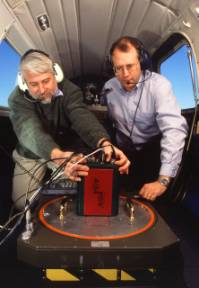|
|
|
Charles L. Walthall
USDA-ARS
Hydrology and Remote Sensing Lab
Beltsville, Maryland
These notes were developed from presentations at an Airborne Remote Sensing Workshop conducted at the National Soil Tilth Laboratory, Ames, IA on November 25-26, 2002. The original presentation was oriented towards users and suppliers of data from a commercially-available small, lightweight, hyperspectral, pushbroom scanner known as the Airborne Imaging Spectroradiometer for Applications (AISA). However the suggestions for first-time data users will apply to imagery acquired by any airborne imaging system. 
The goal is to provide users and providers of airborne digital imagery with a working philosophy about such data, and some suggestions on how to proceed when a new user is handed a data set for the first time. If you are a first time data user, have a data set, have questions about what to do with a data set first, and need immediate guidance, go directly to section IV. If you have not yet acquired imagery and would like more insight to the process begin with the section on Choice of Spectral Bands.
This presentation assumes that the user has working knowledge of the basic elements of an image processing package such as the following commercially-available systems:
Contents
|

